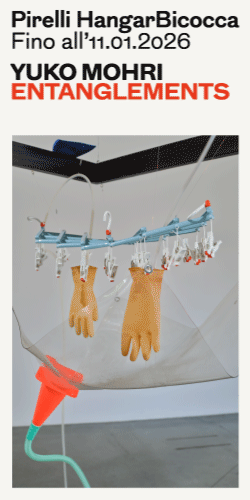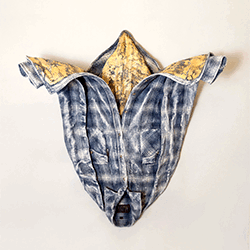
(Scroll down for the English text)
Semplicemente “cose” – “Things” – è il titolo della mostra di Isabella Cornaro – a cura di Rita Selvaggio – che inaugura sabato 25 aprile a Casa Masaccio a San Giovanni Valdarno. Questa prima personale italiana in un’istituzione pubblica, segue due importanti tappe dell’artista: la doppia personale alla South London Gallery e a Spike Island di Bristol.
A Londra, Cornaro ha presentato l’ultima ampia versione di Paysage avec Poussin et témoins oculaires (Paesaggio con Poussin e testimoni oculari) una serie iniziata nel 2008 e liberamente ispirata alla pittura di Nicholas Poussin. Servendosi di una serie di piedistalli e pannelli portanti per esporre in meticolose composizioni gruppi di oggetti, Cornaro offre un’interpretazione tridimensionale degli idilliaci paesaggi classici del maestro francese con i mezzi di un’installazione minimalista. In Témoins oculaires (Testimoni oculari), presso Spike Island, l’artista ha concepito cinque “scene” di dimensioni più ridotte che perseguono la sua ricerca sulla composizione, la percezione visiva e la sua interpretazione; cinque tableaux che interpretano le rappresentazioni fisiche dell’atto del guardare. Per Casa Masaccio, uno spazio così denso di memoria e sedimentazione storica, Isabelle Cornaro ha raccolto una selezione di film e concepito la serie Homonymes III (Homonymes III, 2015), impronte dirette di oggetti che tentano di colare direttamente dal reale categorie di rappresentazione. Come i precedenti Homonymes I e II, anche questi lavori sottolineano i passaggi da uno stato materiale all’altro e si ispirano originariamente agli studi dello storico dell’arte e psicoanalista viennese Ernst Kris sulla ceramica ornamentale di Bernard Palissy, un artigiano del XVI secolo che aveva dedicato tutta la sua vita alla ricerca dei segreti del calco dal vero di oggetti.
Girati in 16mm, i film si servono di una grammatica molto semplice. La macchina da presa scorre sopra oggetti casuali, “cose” organizzate in insiemi, oggetti d’uso quotidiano colti in un attimo di anonimità. Monete, braccialetti d’oro, vasi di vetro, catene, gocce di cristallo, custodie di rossetto. Il processo del trasferimento da “cose” tattili a proiezioni bidimensionali, anima e allo stesso tempo altera i soggetti, li trasforma in immagini, tanto inquiete quanto evanescenti, in cui cogliere la discontinuità del tempo. Nella casa natale dell’autore della Trinità –manifesto della pittura prospettica rinascimentale- in questa dimora dei corpi gravi-, l’immagine è esposta a un continuo processo di metamorfosi. Assecondando il suo caduco destino, crea un improvviso silenzio e un eloquente vuoto di parola.
Sin dagli esordi, la ricerca di Isabelle Cornaro indaga il modo in cui le nostre prospettive sono storicamente e culturalmente determinate. Storico dell’arte di formazione, specializzata in Manierismo Europeo del XVI secolo, il lavoro della Cornaro si serve di un linguaggio visivo fortemente associato a forme e composizioni che spaziano dal Barocco al Classicismo sino all’astrazione modernista, e conduce lo sguardo ad interrogarsi sulla relazione tra i sistemi di rappresentazione e la nostra comprensione del mondo.

THINGS, Isabelle Cornaro
curated by Rita Selvaggio
Opening 25 April 2015 | from 7:00 pm to 12:00 am
Casa Masaccio | San Giovanni Valdarno
On Saturday 25 April Things, Isabelle Cornaro’s first solo exhibition at an Italian public institution, opens at Casa Masaccio.
From the outset, Isabelle Cornaro has focused her research on the way in which our perspectives have been historically and culturally shaped. In her work Cornaro, a trained art historian specialising in 16th-century European Mannerism, makes use of a visual language strongly associated with forms and compositions that range from the baroque to classicism and even modernist abstraction and turns her gaze on the relationship between systems of representation and our understanding of the world.
Things follows her double solo exhibition at the South London Gallery and at Spike Island in Bristol. It is the third in a demanding series of shows that explores, between mimesis and abstraction, the mental and gestural construction of the image and the narrative through the use of geometry (a perspective grid) and emotionally or historically charged objects which function as figures. In London, Cornaro presented the latest version of Paysage avec Poussin et témoins oculaires (Landscape with Poussin and Eyewitnesses), a series begun in 2008 and freely inspired by the paintings of Nicholas Poussin. Using a series of pedestals and supporting panels to display groups of objects in meticulous compositions, Cornaro offers a three-dimensional interpretation of the French painter’s idyllic classical landscapes in the form of a minimal installation.
In Témoins oculaires (Eyewitnesses) at Spike Island, the artist conceived five “scenes” on a smaller scale that continued her research into composition, visual perception and its interpretation; five tableaux that interpret physical representations of the act of looking.
For Casa Masaccio, a space filled with memories and layers of history, Isabelle Cornaro has assembled a selection of films and conceived the series Homonymes III (Homonyms III, 2015), direct impressions taken of objects in an attempt to cast categories of representation straight from reality. Like the earlier Homonymes I and II, these works underline the transitions from one material state to another and took their inspiration originally from the studies by the Viennese art historian and psychoanalyst Ernst Kris of the ornamental ceramics of Bernard Palissy, a 16th-century craftsman who had devoted his whole life to uncovering the secrets of casting objects from nature.
Shot in 16 mm format, the films use a very simple grammar. They play over random objects, ‘things’ organized into sets, objects of everyday use caught in a moment of anonymity. Coins, gold bracelets, glass jars, chains, cut-glass pendants, lipstick holders. The process of transfer from tactile ‘things’ to two-dimensional projections animates and at the same time alters the subjects, turning them into images, as agitated as they are evanescent, in which to catch the discontinuity of time.
In the house where the author of the Trinity – a manifesto of the perspective painting of the Renaissance – was born, in this home of bodies with real weight, the image is exposed to a continuous process of metamorphosis. Accepting its fate of transience, it creates a sudden silence, an eloquent gap in the words.
Isabelle Cornaro was born in 1974 and lives and works between Paris and Zurich.
She has shown both in France and abroad and among her most recent solo exhibitions are the ones at the South London Gallery, London; Spike Island, Bristol; M – Museum, Leuven; LAXART, Los Angeles, TWAAS, New York; Hannah Hoffman Gallery, Los Angeles; Balice Hertling, Paris; Kunsthalle Bern, Bern; Le Magasin, Grenoble; FRAC Aquitaine, Bordeaux; Collège des Bernardins, Paris and 1m3, Lausanne. Her work has also been shown in joint exhibitions at venues like the Musée d’Art Moderne de la Ville de Paris, Paris; Palazzo Cavour, Turin; Public Fiction, Los Angeles; Palais des Beaux-Arts and Palais de Tokyo, Paris; Mercer Union, Toronto; Fondazione Sandretto Re Rebaudengo, Turin, Sculpture Center, New York. One of her interventions is soon to be included in Une brève histoire du futur, at the Musée du Louvre.
Isabelle Cornaro’s work can be found in numerous public and private collections.










